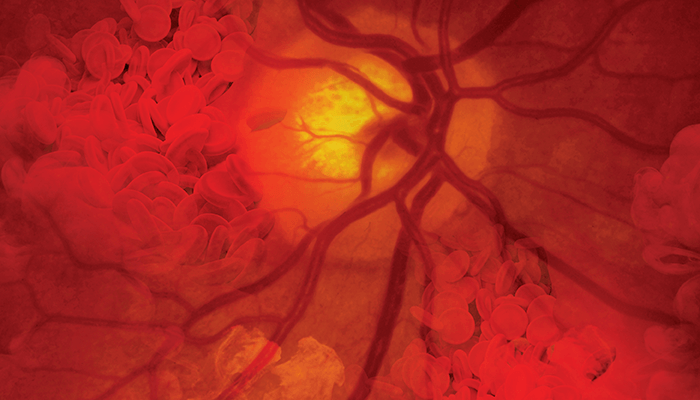
Although it is known that age-related macular degeneration (AMD) develops in the outer blood-retina barrier (oBRB), there remains a lack of understanding around the mechanisms of AMD initiation and progression to advanced dry and wet stages. The short supply of physiologically relevant human oBRB models is one factor that preventing advanced research into degenerative retinal disease, so a team from the National Eye Institute (NEI) set out to engineer their own.
To do this, researchers engineered a native-like three-dimensional (3D) oBRB tissue (3D-oBRB) by bioprinting endothelial cells, pericytes, and fibroblasts on the basal side of a biodegradable scaffold and establishing an RPE monolayer on top. In this 3D-oBRB model, a fully-polarized RPE monolayer provides barrier resistance, induces choriocapillaris fenestration, and supports the formation of Bruch's-membrane-like structure by inducing changes in gene expression in cells of the choroid (1).
Khapil Bharti, the leader of the NEI Section on Ocular and Stem Cell Translational Research, reports that the tissue took four weeks to mature, by which time the RPE cells had formed a confluent polarized monolayer and the scaffold had degraded completely, leaving behind a Bruch’s membrane-like structure. On the other side of Bruch’s membrane, fibroblasts formed a matrix within which endothelial cells and pericytes formed capillaries (similar to native choriocapillaris). This tissue behaved similarly to native RPE-choriocapillaris (CC) tissue and was able to reproduce key cellular phenotypes of AMD, cementing 3D-oBRB as an important model for studying the progression of AMD.
As a result of all the cell types of the 3D-oBRB being induced from patient derived, pluripotent stem cells, researchers are now able to re-create patient disease in a dish, enabling earlier disease detection and intervention research. In addition, Bharti says: ‘this tissue can be used to test the safety and efficacy of new drugs replacing animal usage for drug testing. In the future, we can also use such tissues for transplantation in patients to replace degenerated and damaged retina.’
Bharti and his collaborators are confident that the 3D-oBRB can provide a platform to address previously unanswered questions, such as how exosomes and cytokines regulate RPE–choroid crosstalk. Other areas for further research include the pathological effects of drusen accumulating under the RPE, functionality of the RPE, and choriocapillaris fenestration.
References
- M J Song et al., “Bioprinted 3D outer retina barrier uncovers RPE-dependent choroidal phenotype in advanced macular degeneration,” Nat Methods, [Online ahead of print] (2022). PMID: 36550275.
